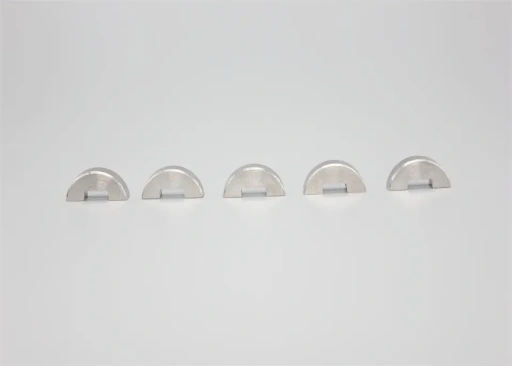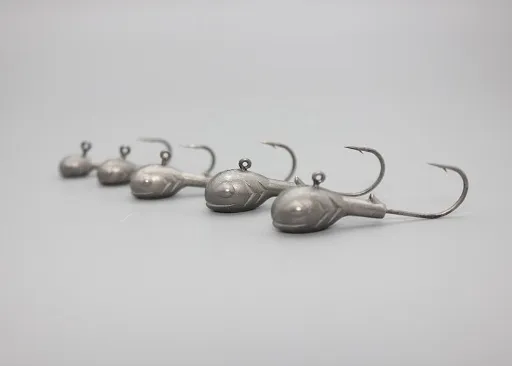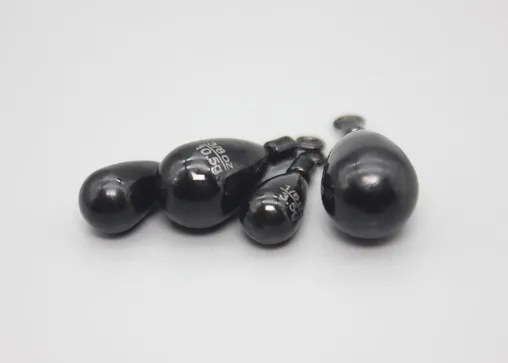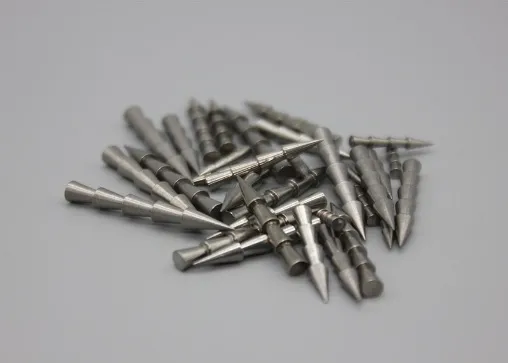Tungsten Alloy Fishing Sinkers Are 63% Heavier Than Lead and Increase Casting Distance by 30%!
Long favored for its low cost, ease of molding, and broad availability, fishing sinkers have traditionally been made from lead. However, heightened environmental concerns and the demand for better performance are prompting a shift toward alternatives. Tungsten alloy stands out as a dense, eco-friendly option that excels in both freshwater and saltwater fishing conditions.
Tungsten is one of the densest naturally occurring elements, with a density of approximately 19.25 g/cm³—making it 63% denser than lead. This critical difference transforms the way fishing sinkers perform. The increased density allows sinkers to be smaller in size while retaining the same or greater weight. Smaller sinkers reduce water and air resistance, resulting in faster sink rates and longer, more accurate casts.
Tungsten alloy sinkers offer outstanding casting performance, giving anglers a clear advantage over traditional lead weights. Due to their higher density, tungsten sinkers are more compact, allowing for better weight distribution and reduced air resistance. This results in longer, more accurate casts and a stable flight trajectory, even in windy conditions. Field tests and user feedback confirm up to a 30% increase in casting distance, enabling anglers to reach deeper waters and precise underwater targets with greater ease.
These real-world results demonstrate how tungsten alloy sinkers not only enhance performance but also help anglers reach spots that were previously difficult to target—an edge that can make all the difference in competitive or recreational fishing.
Beyond casting distance, tungsten provides another key performance benefit—sensitivity. The material’s high density and rigidity allow it to transmit bottom feedback much more effectively than lead. Anglers can easily detect subtle differences in underwater terrain or light bites from cautious fish. This responsiveness is especially valuable in finesse fishing or when targeting species in complex or rocky environments. Smaller tungsten sinkers can also move through vegetation or structure more smoothly, reducing the likelihood of getting stuck and improving lure presentation. These features help both novice and experienced anglers make more informed adjustments in real time, ultimately increasing catch rates.
Lead is classified as a toxic heavy metal that can accumulate in aquatic ecosystems, posing long-term risks to fish, birds, and other wildlife. Many countries and regions—especially in Europe and North America—have already introduced regulations banning or restricting the use of lead-based tackle in certain bodies of water. Tungsten, by contrast, is non-toxic and environmentally inert. Using tungsten sinkers aligns with the growing demand for sustainable outdoor products and allows anglers to fish in compliance with evolving environmental laws.
As environmental regulations tighten and consumers seek better-performing gear, the global demand for tungsten alloy sinkers is rapidly increasing. Export-oriented manufacturers have a unique opportunity to supply markets in need of reliable, eco-friendly alternatives. At our company, we’ve embraced this shift by offering a comprehensive range of tungsten alloy fishing sinkers. Our products are developed through precision engineering and undergo strict quality control to ensure consistency, durability, and optimal performance. Whether it's drop-shot weights, bullet sinkers, or jig heads, each item is designed to enhance the angling experience while minimizing environmental impact.
The move from lead to tungsten represents more than just a material upgrade—it signals a new era of responsible and high-performance fishing. Tungsten alloy sinkers offer unmatched density, greater casting distance, improved sensitivity, and zero environmental toxicity. For anglers, this means better results on the water. For retailers and distributors, it means access to a growing and future-ready market.

 EN
EN AR
AR FR
FR DE
DE HI
HI IT
IT JA
JA KO
KO PT
PT RU
RU ES
ES ID
ID LV
LV VI
VI HU
HU MS
MS GA
GA BE
BE YI
YI EU
EU


